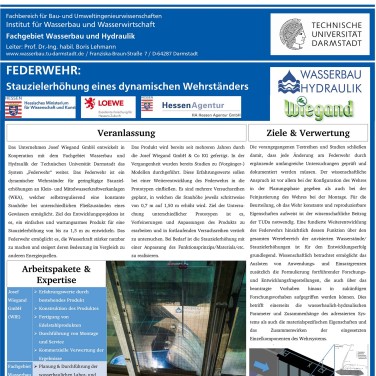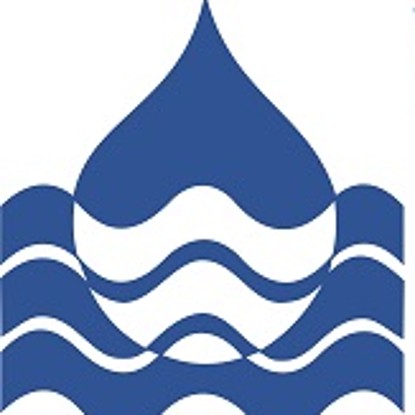Short description
The Josef Wiegand company is further developing the “spring weir” system in cooperation with The Chair of Hydraulic Engineering. The spring weir is a dynamic weir stand for small increases in the dam level at small and medium-sized hydroelectric power plants, which self-adjusts the dam level for different discharges in the flowing water. The aim of the one-year development project is to develop a simple and low-maintenance product for a weir height of up to 1.5 m. The product is designed to be used for the self-regulating adjustment of the weir height for different flows in the watercourse.
In the course of the project, a large number of different spring weir configurations were tested and the results extensively documented in order to work out the physical relationships. Several series of tests were carried out successively to isolate and determine the numerous influencing factors acting on the spring weir. To this end, the original weir configuration was first tested as a basis. Potential for improvement was also identified in this configuration. Based on the comparability with existing weirs and Wiegand's experience with the existing weir target, potential improvements were already tested at this weir height and considered in greater depth with the targeted increase in the weir target.
In order to exclude any influence of the underwater conditions on the measurements, sufficient aeration and a minimum retroactive flow component had to be ensured (see following figure). During the tests, aeration was provided on the underwater side via a flexible pipeline and the vertical linear guide of the potentiometer at the overfall edge, which simultaneously assumed the function of a jet ripper. Recommendations for avoiding and reducing the retroactive flow component should be further developed with a view to implementation in practice. These results are to be transferred to spring weir designs (prototype sites) on the basis of future research projects and applied in the long term.














